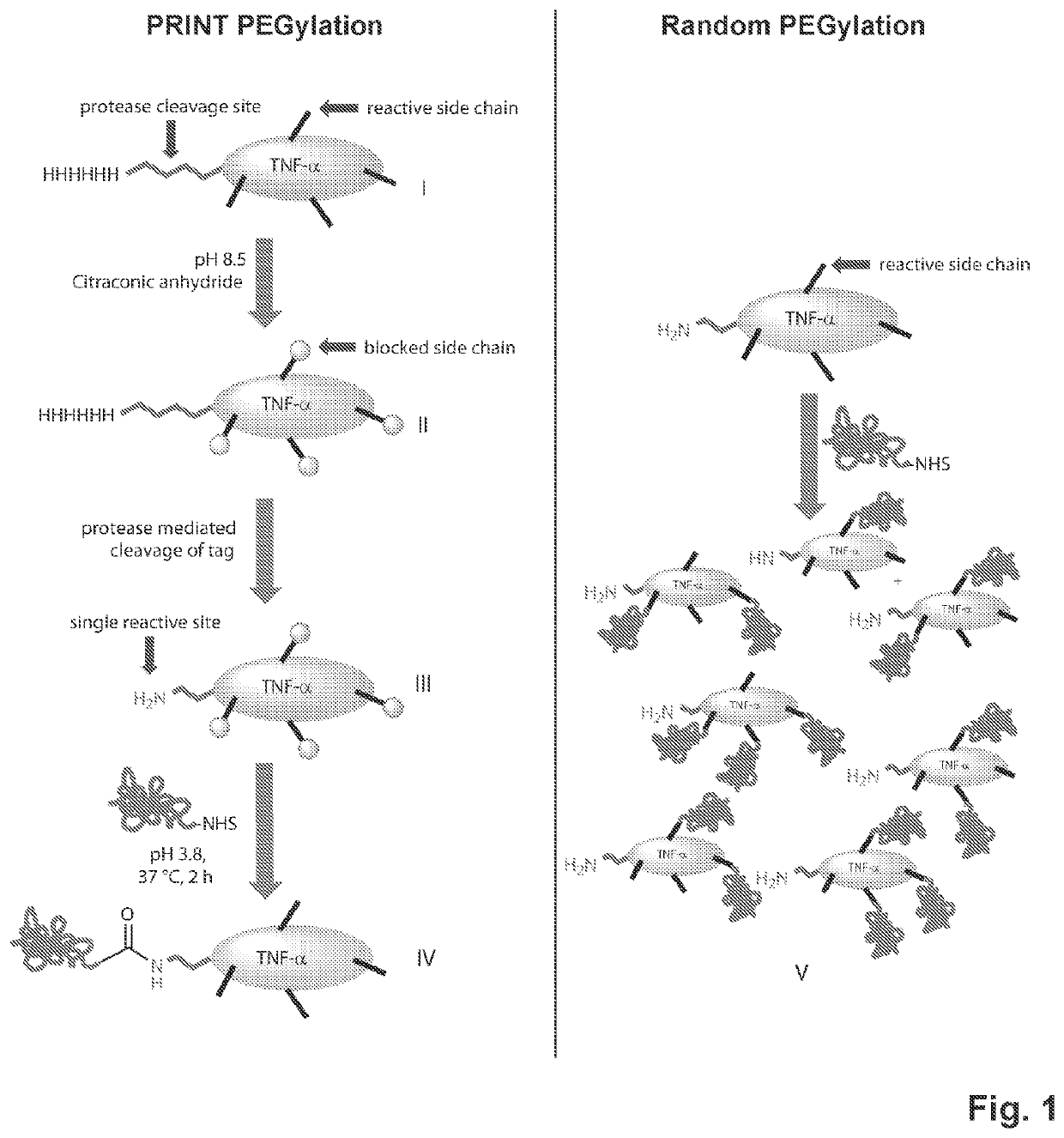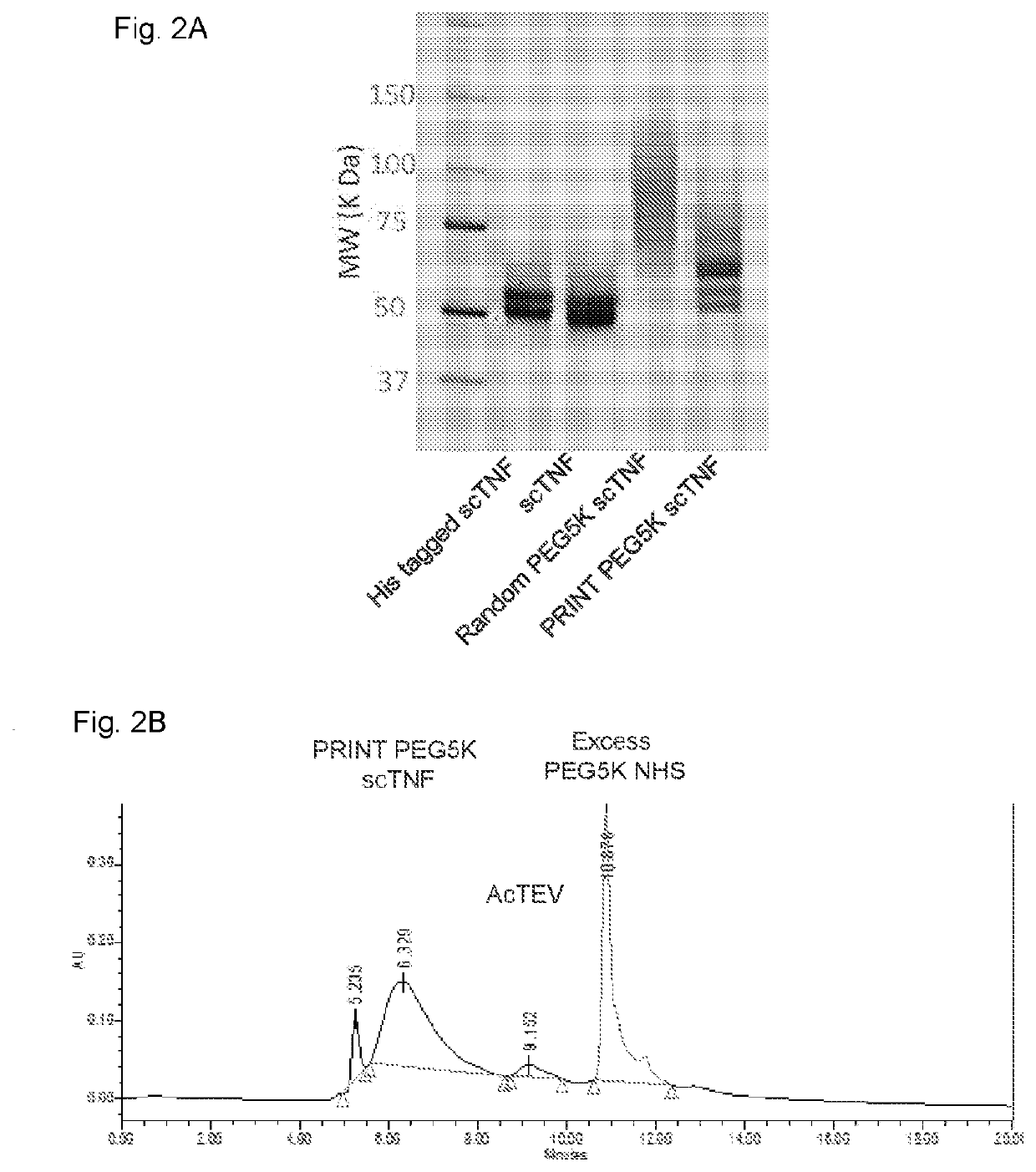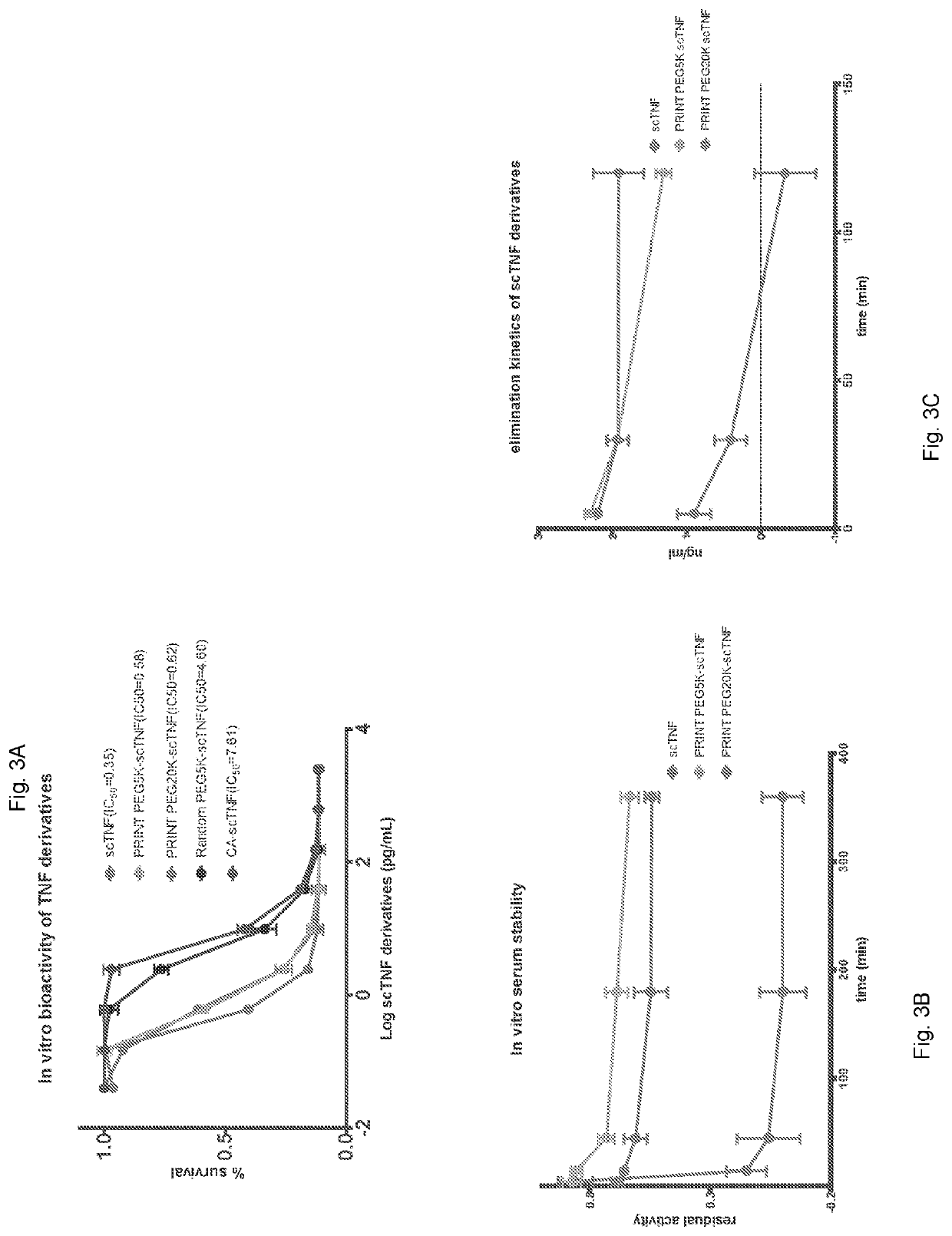Protein bioconjugation method
- Summary
- Abstract
- Description
- Claims
- Application Information
AI Technical Summary
Benefits of technology
Problems solved by technology
Method used
Image
Examples
example 1
and Methods
[0042]General Materials and Methods: Citraconic anhydride(Sigma), Sodium phosphate dibasic and monobasic (Sigma), mPEG 5K NHS ester (NANOCS), mPEG 20K NHS ester (NANOCS), Fluorescein NHS ester (NANOCS) and AcTEV (Life Technologies) were obtained from commercial sources and used as is. Single chain TNF-α (scTNF) was designed according to a published sequence and the recombinant protein was produced by GeneArt in HEK293 mammalian expression system. All animal experiments were designed in accordance with the National Institute of Health's Guide for the Care and Use of Laboratory Animals and were approved by The Johns Hopkins University's Institutional Animal Care and Use Committee.
[0043]Direct Conjugation: scTNF-α (1 mg / ml in PBS) was treated with PEG NHS ester (1 mg) for 1 h at room temperature and excess reagents were removed by dialyses. The recovered product was analyzed and quantitation by done by SDS-PAGE and used as such for in vitro and in vivo animal experiments.
[00...
example 2
[0051]PRINT using scTNF-α as a model protein. A recombinant single-chain TNF-α (scTNF-α) containing a His-tag and TEV protease cleavage site was designed based on a published sequence29. After affinity purification through a nickel-nitrilotriacetic acid (Ni-NTA) column, the His-tagged scTNF-a was treated with a 1000-fold molar excess of citraconic anhydride. Excess reagent was removed by dialysis and the citraconylated protein was subjected to overnight digestion with AcTEV protease. After complete proteolytic cleavage of the His-tag, NHS ester of PEG-5000 (PEGSK) was added and the mixture allowed to shake at room temperature for 30 minutes. Excess reagent was then removed and pH adjusted to 3.8 for deprotection of side chains. These treatments yielded a major N-terminal mono PEGylated species (FIG. 2A Lane 4). In comparison, a traditional PEGylation method without PRINT generated multiple species of various lengths, indicating the expected large and variable numbers of internal rea...
example 3
[0052]PRINT provides N terminal selectivity. To elucidate the exact location of the conjugation, we replaced the reactive PEGSK with fluorescein NHS (Fl) ester, a smaller adduct with a known exact mass of 358 Da (FIG. 5A, lane 4 and FIG. 5B). Size exclusion high-performance liquid chromatography (HPLC) analysis of PRINT PEGylated scTNF-α revealed the formation of a single major product (FIG. 2B). Proteolytic cleavage of PRINT flourescein scTNF-α with trypsin followed by mass spectral analysis confirmed the presence of a single fluorescein molecule at the N-terminal serine (FIG. 6A). No other peptide fragment containing fluorescein was detected (FIG. 6B), suggesting an exquisite N-terminal selectivity and specificity of the reaction.
PUM
| Property | Measurement | Unit |
|---|---|---|
| Biological properties | aaaaa | aaaaa |
| Stability | aaaaa | aaaaa |
| Purity | aaaaa | aaaaa |
Abstract
Description
Claims
Application Information
 Login to View More
Login to View More - R&D
- Intellectual Property
- Life Sciences
- Materials
- Tech Scout
- Unparalleled Data Quality
- Higher Quality Content
- 60% Fewer Hallucinations
Browse by: Latest US Patents, China's latest patents, Technical Efficacy Thesaurus, Application Domain, Technology Topic, Popular Technical Reports.
© 2025 PatSnap. All rights reserved.Legal|Privacy policy|Modern Slavery Act Transparency Statement|Sitemap|About US| Contact US: help@patsnap.com



